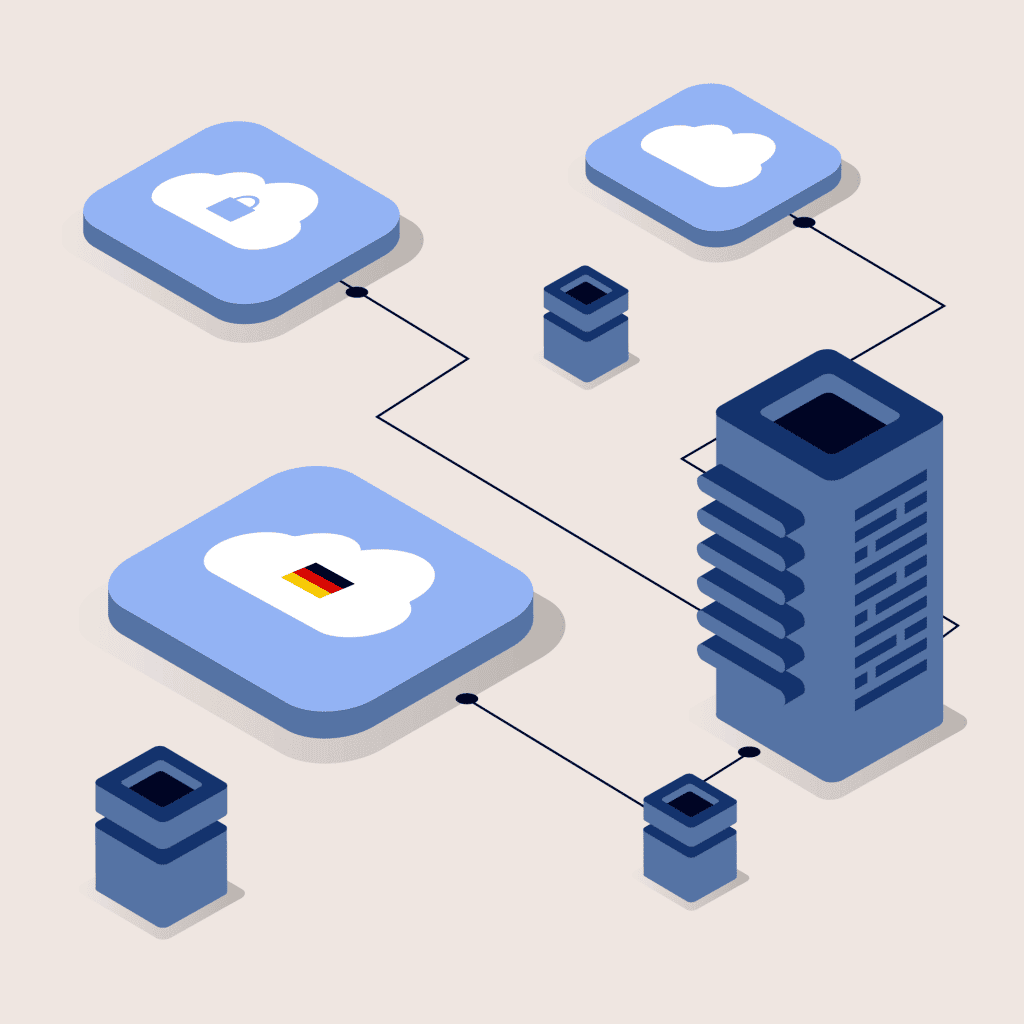Cloud-based SaaS products have established themselves in the communications solutions market in particular. However, the demand for self-hosted software solutions is now on the rise again, including in the messenger context. Companies and government authorities are looking for on-premise messenger apps that can be operated in a private cloud or the company’s own infrastructure.
Most U.S. communication and/or collaboration vendors only offer cloud solutions. Microsoft Teams, Cisco Webex, Slack and many other chat-based collaboration tools from the US are only offered as cloud services. Business messengers like Teamwire, which are provided as self-hosted solutions for on-premise and private cloud infrastructures in addition to public cloud, are an exception today. However, many European enterprises and government agencies in particular require on-premise messenger due to privacy, security, compliance and regulatory requirements.
Today, we want to describe what requirements an on-premise messenger must meet in order to meet IT expectations:
1. Simple installation of the software
An on-premise messenger application should be very straightforward for an organization to set up in its IT infrastructure. Ideally, the software should require a minimal number of firewall changes and should be available in a container that does much of the installation itself.
2. Scalable solution for all sizes of companies and authorities
An on-premise messenger should be scalable to fit and work reliably for small businesses, midsize companies and large enterprises. An on-premise or private cloud server of the messenger should reliably deliver messages, digital content and push notifications to the required number of users/employees of the organization.
3. High availability architecture and cluster setups
The messenger provider should offer high-availability cluster setups for the on-premise server environment. This is important for enterprises (e.g., healthcare and financial sectors), organizations (e.g., emergency services and police departments), and government agencies (e.g., the public order department, social services, and public works) that require 24/7 uptime and need to ensure maximum service levels.
4. Low minimum infrastructure requirements
A messenger for business should work well with as minimum infrastructure and servers as possible in the on-premise environment. For example, if a messenger app requires 5 servers for an on-premise setup for 100 users, that’s clearly too much.
5. Multi-client and multi-domain capability
Companies with different business units and organizations need a messenger that is multi-tenant capable and allows to manage the tenants individually. Organizations that use different email domains need a messenger that is multi-domain capable and automatically creates user directories for those domains.
6. Professional administration
The on-premise messenger for enterprises should provide an easy-to-use and professional administrator portal or dashboard. In general, enterprises need an administration portal for user management, access management, monitoring and surveillance functions, company-wide policies, communication rules, and basic settings.
7. Active Directory synchronization
For simplifying and automating user management and invitation, an on-premise messenger should allow import or ideally synchronization of an LDAP or Active Directory (AD). Such a feature saves a lot of time for the company’s IT administrator.
8. Ease of roll-out and MDM/UEM support
Messenger should enable an easy and fast roll-out for all employees. Therefore, the messenger app should support Mobile Device Management (MDM) and Unified Endpoint Management (EMM) solutions such as Ivanti and Airwatch and provide automated roll-outs on mobile devices.
9. WhatsApp user experience and cross-platform apps
To be accepted by all employees as a WhatsApp replacement in the company and to ensure maximum productivity, the on-premise messenger should provide a Whatsapp user experience and a very similar feature set across all devices, mobile and desktop.
10. Open API and integration into the IT ecosystem
The integration of a messenger into the company’s IT ecosystem is an increasingly important productivity issue: workflows can be accelerated, processes automated, information exchange optimized and employees can work more efficiently. Therefore, an on-premise messenger should provide an open API interface.
11. Strong data protection
The on-premise messenger should comply with the data protection regulations and compliance requirements of the company or industry. For example, the messenger should ensure compliance with national data protection laws and the European General Data Protection Regulation (EU GDPR), as well as principles such as privacy by design and data economy (e.g., no address book storage and no metadata analysis).
12. High security
An enterprise messenger should feature strong encryption to protect all data. The metadata, messages and digital content should be strongly encrypted by the messenger during transmission and when stored on the devices and on-premise server.
13. Audit and compliance features
An on-premise messenger should provide an audit-proof archive of all employee messages and comprehensive audit logs. In addition, the application should be able to implement all necessary measures and guidelines to ensure company-wide compliance.
14. Comprehensive documentation and professional support
The messenger app provider should offer extensive documentation about the application, as well as provide professional support services (ideally through integrators, system houses and/or direct professional services of the messenger provider).
15. Regular updates
To ensure continuous innovation, product leadership, security and maintenance, on-premise messenger should also be updated via regular updates. The appropriate releases are provided by the Messenger vendor for on-premise hosting.
We are here for you!
If you are looking for an on-premise messenger, please contact our sales team via our contact form. Our sales representatives will describe the detailed requirements to you in detail.

